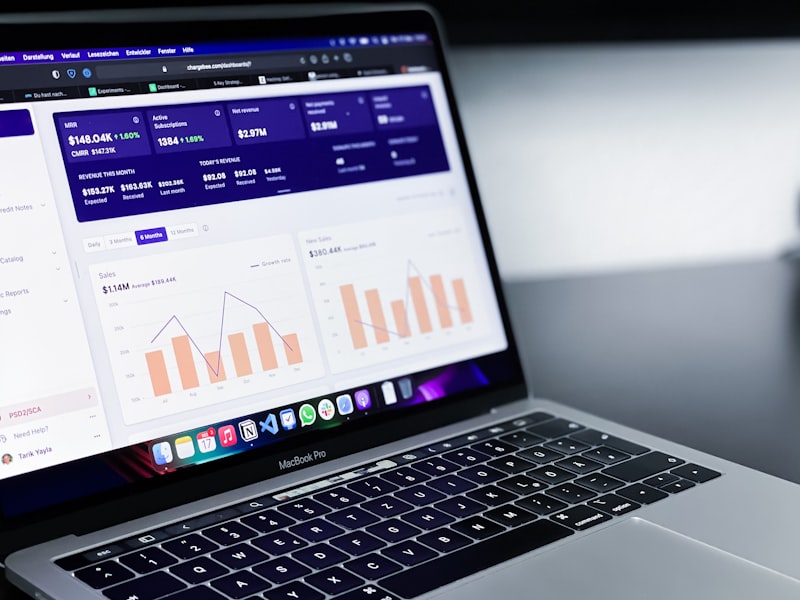Product-led growth. The hottest buzzword in SaaS right now.
Every founder wants it. Every venture capitalist demands it. Entire companies are built around this singular concept.
But what exactly is product-led growth? And how do you actually start implementing it?
At its core, PLG is about letting your product drive acquisition and expansion from the ground up. Forgetting antiquated sales processes. Instead, relying on the product itself as the main vehicle for capturing, converting, and expanding customers.
Easier said than done, of course. PLG requires rethinking decades of traditional go-to-market orthodoxy. It means shifting the focus entirely to building a product so good, so core to a user's needs, that it sells itself. Then optimizing ruthlessly based on data and feedback to accelerate growth.
PLG powers some of the fastest growing SaaS companies today. But it isn't easy. It takes intentionality. Rigorous focus. And an almost religious devotion to creating an incredible user experience.
For PLG to work, you need a viral product that users actively want to share and expand usage of. That level of product-market fit doesn't happen by accident.
In this guide, we'll unpack exactly how to get started with PLG. Key principles to keep top of mind. Ways to audit your product for readiness. How to identify that magical "aha!" moment for users. And crucial tips to bake virality in from the start.
Understand the foundations of PLG
There are a few key principles that underpin product-led growth:
User onboarding is the new sales: With PLG, your initial onboarding experience replaces traditional sales motions. It needs to quickly get users set up and experiencing value.
Freemium models: PLG relies on free tiers or trials to reduce friction in acquisition. The product itself becomes the main vehicle for conversion.
Viral loops: PLG seeks to build organic/viral sharing into the product experience to drive further acquisition.
Expansion: Usage, network effects, and in-product signals are leveraged to expand customer value post-onboarding.
| Foundations of PLG | |
|---|---|
| User onboarding is the new sales | |
| Freemium models | |
| Viral loops | |
| Expansion |
Keep these principles in mind as you design your go-to-market strategy. PLG represents a fundamentally different approach compared to traditional sales.
Audit your product for PLG readiness
Before jumping into PLG, audit your product to assess readiness across a few dimensions:
Onboarding: Does your product have a streamlined, self-service onboarding experience? Can new users get set up and start seeing value quickly without sales assistance?
Core value proposition: Is your core product experience inherently useful or engaging such that users will stick around and expand usage?
Virality: Does your product leverage viral loops and incentives that encourage sharing/referrals?
Expansion: Are there clear in-product signals or triggers that drive increased usage or account expansion?
| PLG Readiness Audit | |
|---|---|
| Onboarding | Is onboarding streamlined and self-service? |
| Core value proposition | Is core product useful and engaging on its own? |
| Virality | Does the product leverage viral loops? |
| Expansion | Are there in-product triggers for usage expansion? |
If you see major gaps, you may need to make foundational improvements to the product first before pursuing a PLG model.
Identify your AHA moment
A core early task is identifying your product's "aha moment" - the moment when a new user "gets" the core value of your product. This is a leading indicator that your onboarding flow is working.
Analyze usage data to detect when drop-off rates decline or engagement spikes. Survey users to ask what made them "click" with your product. The aha moment often coincides with completing a core action like:
- Sending a first message/transaction
- Connecting to another user
- Creating initial content
- Seeing core analytics/reports
Build your onboarding flow to get users to this aha moment as quickly as possible.
Optimize conversion funnel from acquisition to expansion
Next, map out your entire conversion funnel, from acquisition to onboarding to upgrade/expansion. Identify key drop-off points and optimize each stage:
Acquisition: Make it easy to start a free trial or kick the tires. Reduce fields in signup forms.
Onboarding: Streamline required steps to get to aha moment. Use in-product prompts to guide users.
Conversion: Make upgrade path obvious. Highlight benefits of paid tiers or premium features. Offer discounts.
Expansion: Identify in-product triggers for increased usage. Prompt for additional integrations, teammates, or use cases.
Continuously monitor analytics to see impact of optimizations across the funnel over time.
Build virality into the product
PLG products are fundamentally viral. Think about ways to directly encourage sharing and referrals within the product experience:
Incentives: Reward users for sharing via referral promotions. Free months/discounts for successful referrals.
Social sharing: Make it seamless to share content on social media or to invite others to collaborate.
Network effects: Link value to number of users. Let users easily see how growth enhances the product.
Integrations: Support easy connections to other tools and surfaces to spread reach.
| Virality Tactics | |
|---|---|
| Incentives | Rewards for referrals |
| Social sharing | Easy in-product sharing |
| Network effects | Link value to user growth |
| Integrations | Support connections to other tools |
Test different viral features and monitor impact on signups and referrals. Double down on what works.
Develop premium pricing and packaging
To drive conversion and expansion, you need clear premium offerings. Take time to develop paid pricing tiers and packaging:
Core free: Determine what features to offer for free to support acquisition. Avoid giving too much away.
Good/Better/Best tiers: Structure clear upgrade paths from free to multiple paid tiers.
Features to bundle: Identify premium features that support key jobs-to-be-done and bundle into paid offerings.
Business and enterprise plans: Develop packaging optimized for larger accounts if relevant.
| Pricing Approach | Description |
|---|---|
| Core free tier | Key features offered for free to support acquisition |
| Good/Better/Best paid tiers | Clear upgrade paths from free to multiple paid tiers |
| Bundle premium features | Features supporting key jobs-to-be-done |
| Business/Enterprise plans | Packaging optimized for larger accounts |
Test pricing page designs and messaging. Survey users. Refine based on feedback.
Integrate onboarding and in-product experiences
Don't silo onboarding and in-product experiences. Integrate them to drive ongoing adoption:
In-product prompts: Use prompts, nav bars, messaging, etc. to guide users through key workflows post-onboarding.
In-app notifications: Celebrate key milestones and achievements. Prompt for key actions.
Tours and tips: Offer occasional tours or tooltips to expose new features.
Opt-out vs. opt-in: Make desired behaviors the default with opt-out vs. adding friction with opt-in.
Surveys and feedback: Continuously gather user feedback to refine experiences.
Onboarding is not one-and-done. Leverage ongoing in-app experiences to drive engagement and reduce churn.
Measure leading indicators of PLG model health
Don't rely solely on lagging business metrics. Focus on leading indicators that your PLG motion is working:
- Onboarding completion rate
- Time-to-first-aha moment
- Viral coefficient
- Free -> paid conversion rate
- Expansion/upsell rate
- Churn rate
Monitor these metrics by cohort to quickly detect changes. Diagnose issues and continuously improve.
Play the long game
Optimizing PLG is a continuous process. Make small bets across the onboarding and in-product experiences. Measure rigorously. Double down on what moves the needle. Maintain a culture of experimentation. Don't give up too quickly or over-index on flash-in-the-pan tactics. Take a long view to transform business model and company culture.
In summary
Transitioning to a PLG model represents a major change, but the payoff can be tremendous growth fueled by the product itself. Focus first on building a great product with viral hooks before layering on other tactics. Obsess over the user experience end-to-end. With a relentless culture of optimization, PLG can transform the trajectory of your business.
FAQ
1. What type of companies should adopt a product-led growth strategy?
Product-led growth (PLG) works best for companies that provide self-serve software products, particularly in SaaS businesses. PLG is harder for services/consulting companies or products with extensive touch sales requirements. Almost any software company can benefit from PLG principles, but the more you rely solely on the product itself to drive value and conversion, the better PLG performs.
2. How much should we offer for free in a freemium model?
This depends on your product, but in general a good rule of thumb is to offer 20-30% of your full-product capabilities in the free version. You want to give users a taste of real value, not just a barebones trial. But avoid giving too much for free that limits paid conversions. Analyze usage data to understand what drives conversions and expand/restrict your free offerings accordingly.
3. What are examples of effective viral loops?
Some of the most common viral loop examples include:
Referral programs: Offer rewards like free months of service for successful user referrals. This incentivizes sharing.
Social sharing: Make it very easy for users to share content or collaborate with others right within your product experience. This inherently spreads awareness.
Network effects: Show how the product/network improves and becomes more valuable as more users join. People are more likely to stay and refer others as the network grows.
4. How can I identify my product's "aha moment"?
Analyze usage data points to detect when people commonly experience higher engagement or conversion rates. Survey users and directly ask what specific moment or action caused your product to "click" for them. The aha moment usually coincides with successfully executing a core action like sending a first message, connecting with another user, publishing initial content, etc. Identify the step and optimize onboarding to get users there quickly.
5. What key metrics indicate PLG model health?
Leading indicators to monitor include:
- New user conversion rate
- Time to first aha moment
- Virality as measured by invites per user
- Expansion rate
- Churn rate
Track these metrics over time, segmented by cohort. Watch for positive and negative trends.
6. How often should I change pricing tiers and packages?
Don't change pricing too frequently, but regularly reevaluate at least every 6 months. Survey users to identify desired new features to include in upgraded packages. Analyze usage data to detect which features drive willingness to pay more. Adjust tiers and features bundled as needed, but avoid dramatic pricing swings. Prominently communicate pricing changes and migration options well in advance of taking effect.
7. What passive engagement approaches can I use post-onboarding?
Post-onboarding, leverage tactics like:
- In-product notifications to celebrate milestones and prompt actions
- Tips/tours to highlight new features
- Default behaviors to the desired opt-out settings
- Surveys and prompts for feedback to improve
- Analyze usage data to deliver customized recommendations
The goal is to passively guide users to greater engagement vs. interrupting workflows.
8. How can I ensure continuous optimization?
- Institute regular review cadences for metrics performance trends, user research, competitive analysis, etc.
- Develop rigorous split testing for pricing, onboarding, expansions tactics, and other optimization ideas.
- Align team goals and culture to PLG performance. Celebrate wins and learnings.
- Dedicate resources expressly to listen to user feedback and fine-tune experiences.
- Maintain roadmap focus on enhancing PLG elements vs. just new features.
9. What is the right team structure for PLG?
Successful PLG teams typically include dedicated:
- Product marketing: Focus specifically on conversion funnel optimization.
- Growth/engagement teams: Own continuously improving PLG performance.
- UX design: Embed within growth team to optimize user experience.
- Data science: Inform product decisions with usage analytics.
10. How long does it take to demonstrate PLG impact?
Depends on baseline, but expect 6-12 months to implement initial changes and demonstrate measurable lift in PLG metrics like conversion, virality, expansion rates. Maintain urgency but also patience - optimizing PLG is a gradual, never-ending process. Stick with high potential efforts for enough time to properly evaluate impact.






